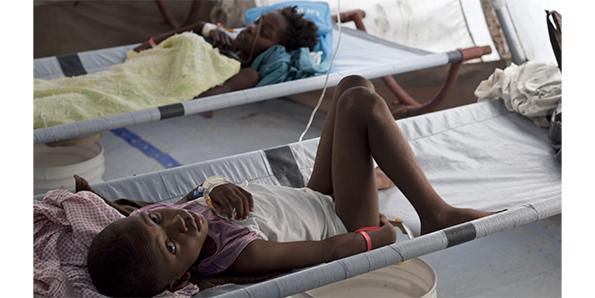Diseases are everywhere and if you see, 5 out of 10 people have infectious which are not obvious at times with your naked eyes. Human being lives a life which is exposed to various bacteria and virus which somehow latches onto a human’s body either through contact or breathes, which are spread from one person to another too. Sometimes it outbreaks in the form of diseases which are either curable or incurable, also some of them shows themselves only after a certain period of time. Current lifestyle of human beings is such that food is made out of artificial ingredients which are harmful when consumed for a long period of time. Also some live in unhygienic conditions which are also the reasons which increase the occurrence of infectious diseases. Here I’m listing out few of the common infectious diseases which has higher rate of occurrence.
1. Tuberculosis
Tuberculosis is caused by bacteria called Mycobacterium Tuberculosis which mainly affects a person’s lungs. TB is an airborne disease and is contracted to a person when he comes in direct contact with a TB patient who coughs or sneezes in front of him. Symptoms mainly include bad cough up to 3 weeks, loss of appetite, weight loss, fever, coughing up blood or mucus. TB can be treated when it is diagnosed earlier with medicines which need to be consumed for a long period of time. If left untreated, it can turn deadly.
2. Hepatitis
Hepatitis is one of the rampant diseases presently in the world and there are various types of the same. This is basically disease which causes inflammation of liver. Liver being the most vital organ for the working of the system, if affected can cause much problem to the person. The types are A, B, C, D and E; their symptoms and degree of severity having difference. Though A and C type is caused by intake of contaminated food; B, C and D are caused when made direct contact with the infected fluids mainly through blood and blood products. Symptoms include fatigue, dark urine, light colored stools, fever and jaundice. Most of the times the symptom goes unnoticed and is not evident with naked eyes. Early diagnosis would be required for this disease and proper treatment with proper vaccines would initiate the decrease in the severity of the disease.
3. Malaria
Malaria is caused by parasite named plasmodium which is carried by infected mosquitoes and the disease becomes evident only 10-15 days after the bite. The symptoms are high fever, chills, muscle pain; more like flu symptoms. The parasite which enters the body multiplies itself in the liver and also affecting the red blood cells too. If not treated at the earliest, it can become life threatening situation by blocking blood supply to various vital organs. Early diagnosis is very much important for this disease as that is the only way to curb the disease from increasing.
4. Food poisoning
Food poisoning is rather common infectious disease when someone gets when that person consumes food which is contaminated or prepared in an unhygienic surrounding. Symptoms are basically diarrhea, loss of body fluid, vomiting and tiredness. However they are not fatal disease and can be treated by consuming ORS and other antibiotics to avoid any more concurrence of the disease. This disease extends up to maximum 2 days. If it extends one should seek medical assistance.
5. Dengue
Dengue is disease which is caused by transmission of viruses by mosquitoes and ends up causing symptoms like fever, joint pains, headache, rashes and swollen lymph nodes. Worst case dengue fever causes hemorrhage with bleeding, vomiting, breathing difficulty. This mainly affects children under the age of 10 years and is very lethal if not diagnosed early. Although there is no proper treatment for the disease, early diagnosis and attacking individual symptoms can help in combating this deadly disease.
6. Cholera
Cholera is another infectious disease which is a water borne disease caused by bacterium Vibrio cholerae, basically spread through contaminated water which is infected with the feces of an infected person. The basic symptoms of cholera affected person are watery diarrhea and vomiting and worst case, even death. The severity of symptoms can lead to excessive fluid lose along with electrolyte imbalance. Oral rehydration solution is given at the start of disease, however anti-bacterial drugs are given to the patient when the disease becomes serious. If one makes you sure the water consumed is free of any contamination, he can avoid himself getting infected by the same. Proper hygiene is to be followed after one uses washroom by using soap or other antibacterial solution to avoid spreading of the virus.
7. Common cold
Common cold is the most common of the infectious disease which is an airborne disease and contracted when direct contract is made with a common cold patient. A common cold patient shows the basic symptoms of running nose and sore throat. Sneezing is also seen in the patient and this is the main reason for the spread of common cold among people. A person having this disease should make sure close his mouth while sneezing to avoid its reach to other people. Also making sure carrying clean handkerchiefs and tissues would evade the return of such disease. Although not too serious, taking precautionary measures can make sure one doesn’t happen to get this disease.
8. Leprosy
Leprosy is a chronic infection caused by bacterium Mycobacterium leprae and Mycobacterium lepromatosis, which causes one’s skin to be damaged beyond repair if not treated for a long period of time. Primarily, the bacterium affects the peripheral nerves of upper respiratory tract causing inflammation of the same and formation of sores on the skin as a primary external sign. Although the spread of the disease is still unknown, the infection can cause shortening of the fingers and toes. The treatment of this disease extends to the time period of 12 months, which has resulted in the decrease of the number of people affected with the same.
9. AIDS
Known as Acquired Immunodeficiency Syndrome is caused by Human Immunodeficiency Virus (HIV) infection which affects the immunity power of a human being. It is one of those disease which is rampant from around 1980 till the current date, which has affected and even affecting millions. Mainly caused due to unprotected sexual intercourse, usage of unsterilized needles and also contaminated blood transfusion, the HIV slowly damages the immune system in the body making it vulnerable to diseases and infections which can go up to growth of tumor. Although there are treatments to slow down process of growth of this disease, there is no permanent cure for this disease. The fast emergence of this disease necessitated on the importance of using new and sterilized needles; also propagating the idea of having safe sex. This disease has attracted International organization and parties which is viewed as a social stigma in the society.
10. Chicken pox
Primary caused by Varicella Zoster virus, it is an airborne disease spread from an ill person or by direct contact with the same. The start of disease on the person can be seen as a rash at first stage that is developed into blisters in the time span of 10-12 hours which appears all around the body. These blisters formed can be itchy and is present until it is dried out in around 6-7 days. A person who has contracted chicken pox virus is infectious from 1-2 days before the rash starts appearing on the body and also after it has formed into blisters which is filled with the virus infected liquid. One must make sure not to make a direct contact with a chicken pox patient until the sores has dried out which is a method of avoiding contracting of the disease. Although rarely fatal, chicken pox can be treated by various medicines and vaccines present.











Leave a Reply